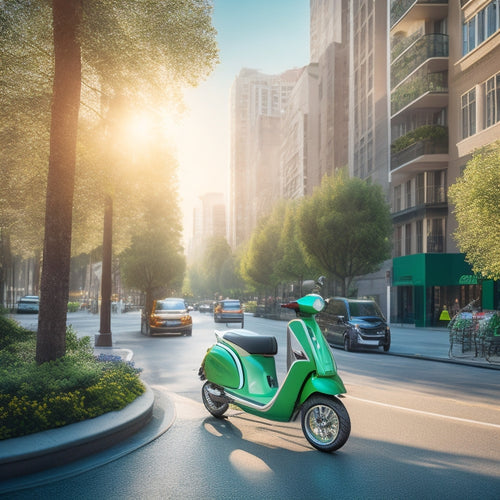
What's Behind the Higher Cost of Roof Top Solar Panels
Share
You're likely to pay a premium for rooftop solar panels due to several key factors that drive up their cost. High-quality materials, advanced technology, and skilled installation increase upfront expenses, but they also guarantee durability, performance, and safety. Complex roof geometries, energy storage needs, and efficient inverter and mounting hardware choices also contribute to higher costs. Permits, inspections, and brand reputation further add to the overall expense. As you investigate the specifics behind these factors, you'll gain a clearer understanding of what you're really paying for – and how it'll pay off in the long run.
Key Takeaways
- High-quality solar panel materials with advanced technology and high-efficiency PV cells increase upfront costs but ensure durability and performance longevity.
- Complex roof geometries, unique shapes, and obstructions require custom mounting systems, increasing installation complexity and labor costs.
- Premium inverters with high efficiency ratings, maximum power point tracking, and longer lifespans are more expensive but essential for optimal energy conversion.
- Energy storage and backup systems, such as solar batteries, add to the overall cost but provide reliable energy supply during outages and reduce grid reliance.
- Brand name reputation, warranty periods, and premium features also contribute to the higher cost of rooftop solar panels, affecting product quality and service reliability.
Quality of Solar Panel Materials
Reliability is an essential aspect of rooftop solar panels, and it begins with the quality of the materials used to manufacture them. You need solar panels that can withstand harsh weather conditions, last for decades, and maintain their solar efficiency over time. High-quality materials guarantee material durability, which directly impacts the overall performance of your solar panel system.
The type and quality of photovoltaic (PV) cells, for instance, greatly affect solar efficiency. High-efficiency PV cells can convert more sunlight into electricity, resulting in higher energy yields. When you invest in premium solar panels, you're paying for advanced technology that maximizes energy production. This means you'll generate more power per hour of sunlight, reducing your reliance on the grid and your energy bills.
While high-quality materials come at a higher upfront cost, they provide long-term benefits, including reduced maintenance, extended warranties, and improved overall system reliability.
Installation Complexity and Labor
As you opt for premium solar panels, you're not only paying for high-quality materials but also for the skill required to install them correctly.
This is where installation complexity and labor costs come into play. The complexity of your rooftop solar panel installation can notably drive up costs. Installers must maneuver around obstacles like multiple roof angles, skylights, and vents, which require additional time, equipment, and proficiency.
Additionally, ensuring installation safety is paramount, and installers must undergo rigorous labor training to handle high-voltage electrical systems and work at heights. This specialized labor training comes at a cost, which is reflected in your overall bill.
Likewise, the installation process itself can be labor-intensive, involving tasks like measuring, cutting, and securing panels to your roof.
All these factors contribute to the higher cost of rooftop solar panels, but they're essential for a safe, efficient, and long-lasting installation that generates maximum power for your home.
Roof Size and Shape Factors
When you're considering rooftop solar panels, you'll need to account for your roof's unique size and shape.
Complex roof geometry, such as multiple peaks and valleys, can increase installation costs.
Additionally, factors like shingle type variations, obstructions, and shading will also impact the final cost of your solar panel system.
Complex Roof Geometry
Complex roof geometry, characterized by non-standard roof sizes and shapes, can greatly drive up the cost of rooftop solar panels. You may have a roof with multiple skylights, vents, or chimneys, which can make it difficult to find suitable spaces for solar panels.
Additionally, roofs with unusual shapes or angles may require custom mounting systems, adding to the overall cost.
When it comes to roof design, aesthetic considerations can also play a significant role. You may want to ascertain that the solar panels blend in with the existing structure, which can be a challenge with complex roof geometries.
This may require more planning and consultation with designers or engineers, further increasing the cost.
To accommodate complex roof geometries, solar panel installers may need to use specialized equipment or modified installation techniques.
This can lead to higher labor costs and longer installation times. As a result, it's crucial to factor in the added expense of complex roof geometry when calculating the overall cost of your rooftop solar panel system.
Shingle Type Variations
Because different shingle types can greatly influence the installation process, you'll need to take into account their variations when planning your rooftop solar panel system. The type of shingle on your roof affects the complexity and cost of the installation. For instance, some shingles may require specialized mounting hardware or additional labor to guarantee a secure and waterproof installation.
| Shingle Type | Characteristics |
|---|---|
| Asphalt | Lower cost, lower durability, lower aesthetic appeal |
| Metal | Higher cost, higher durability, higher aesthetic appeal |
| Slate | Highest cost, highest durability, highest aesthetic appeal |
| Clay/Concrete | Higher cost, higher durability, higher aesthetic appeal |
| Wood | Higher cost, lower durability, higher aesthetic appeal |
When selecting a shingle type, consider factors such as shingle durability, aesthetic appeal, and cost. For example, asphalt shingles are more budget-friendly but may not provide the same level of durability as metal or slate shingles. Additionally, some shingle types may require more labor-intensive installation, which can increase costs. Understanding the characteristics of different shingle types will help you make an informed decision when planning your rooftop solar panel system.
Obstructions and Shading
As you consider the shingle type for your rooftop solar panel system, you'll also need to examine the roof itself, keeping in mind obstacles and shading that can affect the system's performance.
Obstructions like chimneys, vents, and skylights can reduce the available space for solar panels, increasing the cost of the system. Furthermore, shading from trees, buildings, or other structures can greatly decrease the system's energy output.
A thorough shading analysis is essential to determine the best placement and orientation of your solar panels. This analysis assesses the roof's solar access, considering the time of day, season, and year to identify areas with the most sunlight.
By understanding the shading patterns, you can design a system that maximizes energy production while minimizing the impact of obstructions. A well-designed system can reduce the number of panels required, ultimately decreasing the overall cost.
Energy Storage and Backup Costs
How do you guarantee a steady power supply when the sun isn't shining or during a grid outage with your rooftop solar panels? This is where energy storage and backup costs come into play.
To guarantee a reliable energy supply, you'll need to invest in solar battery technology, which stores excess energy generated by your solar panels during the day for use at night or during outages. This added functionality comes at a cost, contributing to the higher price tag of rooftop solar panels.
The cost of energy storage systems varies depending on the type and size of the battery, as well as the inverter and charger required to manage the energy flow.
However, the benefits of having a backup power source can't be overstated. With energy storage, you can enjoy energy cost savings by reducing your reliance on the grid and minimizing the impact of time-of-use pricing.
Additionally, you'll have peace of mind knowing you're prepared for unexpected power outages. By understanding the costs associated with energy storage and backup, you can make an informed decision about the overall value of rooftop solar panels for your energy needs.
Inverter and Mounting Hardware
When you're considering the cost of rooftop solar panels, you need to factor in the inverter and mounting hardware.
The inverter's efficiency rating will impact how much energy your system produces, while the mounting hardware costs can add up quickly.
Additionally, complex installation requirements, such as specialized tracking systems, will further increase the overall cost.
Inverter Efficiency Ratings
Through the marriage of inverter and mounting hardware, roof top solar panels' overall performance is greatly influenced. The inverter, a vital component, converts DC power from the solar panels to AC power for your home. Its efficiency rating plays a significant role in determining how much power you'll generate. You'll want to choose an inverter with a high efficiency rating to maximize your energy output.
When selecting an inverter, consider the following factors:
-
Inverter types: String inverters, microinverters, and power optimizers each have their pros and cons. String inverters are the most common, but microinverters offer more flexibility.
-
Inverter lifespan: A longer lifespan means fewer replacements and lower costs. Look for inverters with a lifespan of 15 years or more.
-
Maximum power point tracking (MPPT): This feature guarantees the inverter operates at its maximum efficiency, even in varying sunlight conditions.
Mounting Hardware Costs
You've already considered the inverter's efficiency rating to maximize your energy output.
Now, let's focus on the mounting hardware costs that impact the overall expense of your rooftop solar panel system. The type of mounting hardware you choose greatly affects the cost. You'll need to decide between fixed-tilt, single-axis, and dual-axis tracking systems.
Fixed-tilt systems are the most affordable, but they offer limited flexibility. Single-axis tracking systems, on the other hand, provide better energy output, but at a higher cost. Dual-axis tracking systems offer the highest energy output, but they're also the most expensive.
Mounting system innovations have improved efficiency and reduced costs. For example, some systems use shared rails, reducing material costs. Others use clamps instead of bolts, making installation faster and easier.
However, these innovations may not be compatible with all solar panel brands, so be sure to check compatibility before making a decision.
Ultimately, choosing the right mounting hardware type and taking advantage of mounting system innovations can help optimize your energy output while keeping costs in check.
Complex Installation Requirements
Beyond the cost of mounting hardware itself, complicated installation requirements can further drive up expenses. As you consider installing roof top solar panels, you'll need to factor in the details of system design and regulatory compliance. This is where the knowledge of a professional installer comes in, as they'll need to confirm that your system meets local building codes and electrical standards.
Here are three key areas where complicated installation requirements can drive up costs:
-
Inverter selection and configuration: Choosing the right inverter for your system is vital, as it affects energy output and efficiency. However, this requires careful consideration of your system's specific needs, which can be time-consuming and costly.
-
Customized mounting solutions: Roof top solar panels often require customized mounting solutions to accommodate unique roof shapes, sizes, and angles. This can lead to higher costs due to the need for specialized equipment and labor.
-
Electrical infrastructure upgrades: In some cases, your electrical infrastructure may need to be upgraded to accommodate the solar panel system. This can include installing new electrical panels, wiring, or circuit breakers, adding to the overall cost of installation.
These challenges can add up quickly, but are essential to confirm a safe, efficient, and compliant solar panel system.
Permits and Inspection Fees
Many jurisdictions require homeowners to obtain permits before installing rooftop solar panels, and these permits come with fees. You'll need to factor these costs into your overall budget.
The permit application process involves ensuring your system complies with local zoning regulations and building codes. This may include submitting detailed plans and specifications for review.
Once your application is approved, you'll need to schedule inspections to verify that your installation meets regulatory compliance standards. Inspection timelines can vary, but you should plan for at least one or two site visits.
While these permits and inspections may seem like an added hassle, they're essential for ensuring your system is safe and functional.
On the bright side, some jurisdictions offer local incentives, such as solar rebates, to offset the cost of permits and inspections. Be sure to research these opportunities in your area.
Brand Name and Warranty Impact
In accordance with your brand name and warranty preferences, the cost of rooftop solar panels can vary considerably. A reputable brand with a long-standing history of supplying high-quality products may charge more for their solar panels compared to a lesser-known brand. This is because a well-established brand reputation often translates to higher manufacturing costs, research and development expenses, and quality control measures.
When it comes to warranty duration, a longer warranty period typically means higher costs.
Here are some key factors to take into account:
-
Brand reputation: A reputable brand may charge more for their solar panels, but they often provide better quality products and services.
-
Warranty duration: A longer warranty period may increase the upfront cost, but it provides you with peace of mind and protection against potential defects or malfunctions.
-
Premium features: Some brands offer premium features, such as enhanced performance monitoring or advanced inverter technology, which can drive up the cost of their solar panels.
Ultimately, you'll need to weigh the benefits of a reputable brand and extended warranty against the additional costs.
Frequently Asked Questions
Are Solar Panels More Expensive During Peak Season or Holidays?
You'll find that solar panel pricing tends to remain stable throughout the year, regardless of peak season or holidays, as manufacturers and installers don't typically hike prices due to seasonal demand, ensuring you get a fair deal.
Can I Install Solar Panels on a Rented Property or Apartment?
You're maneuvering a complex web, trying to install solar panels on a rented property or apartment, but it's like trying to fit a square peg into a round hole. You can investigate solar leasing options, but tenant rights and landlord approval are vital factors to take into account.
How Long Does It Take to Recoup the Cost of Solar Panels?
You'll recoup the cost of solar panels in 5-10 years, depending on your energy savings, financing options, and installation factors like roof size and local incentives; a thorough cost analysis will help you determine your payback period and minimize maintenance costs.
Are There Any Tax Benefits or Incentives for Solar Panel Owners?
You're eligible for federal tax credits and state-specific solar rebates, which can greatly offset the upfront cost of your rooftop solar panels, allowing you to break even sooner on your investment.
Can I Install Solar Panels on a Metal or Tile Roof?
"When it rains, it pours," but don't let that stop you from utilizing the sun's power; you can install solar panels on a metal roof with specialized metal roof installation equipment, and on a tile roof with extra tile roof considerations for structural integrity.
Related Posts
-

What Makes a Road Bike-Friendly by Design?
As you plan and design roads, incorporating features like dedicated bike lanes, smooth surfaces, and traffic calming ...
-

10 Tips for Cleaner City Air With Scooters
By adopting a few simple habits, you can make a significant impact on reducing city air pollution with your scooter. ...
-

What Are the Average Cost Savings of Solar Panels
You can expect to save between $400 and $1,000 per year on your electricity bills with solar panels, which translates...


